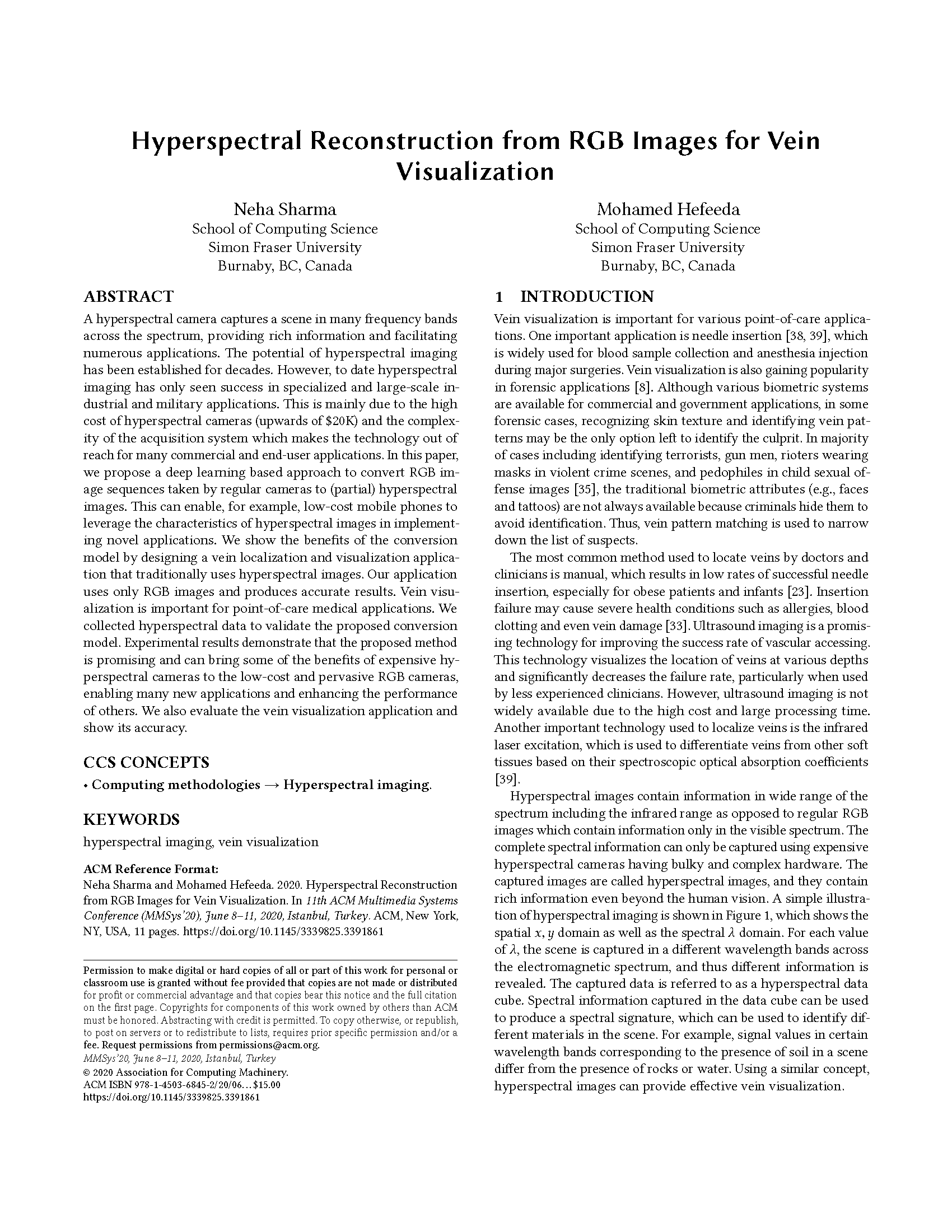|
A hyperspectral camera captures a scene in many frequency bands
across the spectrum, providing rich information and facilitating
numerous applications. The potential of hyperspectral imaging
has been established for decades. However, to date hyperspectral
imaging has only seen success in specialized and large-scale industrial
and military applications. This is mainly due to the high
cost of hyperspectral cameras (upwards of $20K) and the complexity
of the acquisition system which makes the technology out of
reach for many commercial and end-user applications. In this paper,
we propose a deep learning based approach to convert RGB image
sequences taken by regular cameras to (partial) hyperspectral
images. This can enable, for example, low-cost mobile phones to
leverage the characteristics of hyperspectral images in implementing
novel applications. We show the benefits of the conversion
model by designing a vein localization and visualization application
that traditionally uses hyperspectral images. Our application
uses only RGB images and produces accurate results. Vein visualization
is important for point-of-care medical applications. We
collected hyperspectral data to validate the proposed conversion
model. Experimental results demonstrate that the proposed method
is promising and can bring some of the benefits of expensive hyperspectral
cameras to the low-cost and pervasive RGB cameras,
enabling many new applications and enhancing the performance
of others. We also evaluate the vein visualization application and
show its accuracy.
|



